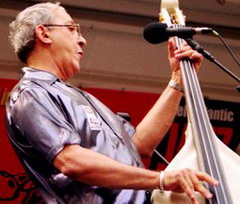Timba reaches stardom
- Submitted by: admin
- Arts and Culture
- Music
- 02 / 25 / 2007

Timba has invaded billboards the world over with websites, dancing halls, books, magazines and the works. Experts say that since the times of Perez Prado and the mambo mania, such a resounding and polemic impact on music was not seen.
Some even say it has created greater commotion than the coming of electricity to Havana. Don't mistake the timba with timbeque (noisy dancing) or the hot rumba of centuries past. The "new timba" is music born in November, 1989, when the NG La Banda orchestra toured the Havana neighbourhoods with a new concept, style, tone and musical sound.
It has of course its precedence on four pillars: Juan Formel with the songo (mix of son, yoruba and Spanish pop, a fusion between combo and charanga), Irakere with a front line format of metals, a hit to the heart of the bass drum and the fusion of jazz and electronics, the rumba and bata drums.
Reve with the changüí of son and rumba in the sassy orchestrations of Juan Carlos Alfonso. Adalberto Alvarez with Son 14 in the rebirth of the son salsa group -only faster.
There are other percussion precedents since 1961. The Enrique Bonne drums with 54 players gave a new category to the conga with Chinese trumpet and all. In 1963, the irruption of Mozambique rhythm with Pello el Afrokan wa sinfluenced by the conga and carnaval music marked the 60s. Let's not forget that conga and rumba percussionists are decisive in musical groups.
Juan Formel hass confessed to me that he who absorbs, snatches, extracts and synthesizes all the timba precedents is Jose Luis Cortes, a musician of Congo origin, king of the tumbaos, mountain tunes and choruses. He does away with jazz girdles -polyrhythm- of Irakere and fuses it with the dancing simplicity of the Van Van (Jose Luis Cortes played in both groups).
The Tosco as Cortes is known, imposed music for dancing, over the interests of some musicians too dependent on jazz. "We changed intellectual music which would take us to the ruin, for the essence of Cuban traditions and we won in the end", said Cortes.
The first foreign specialist to understand the mechanics of timba was Ned Sublette of the United States. He publishes in 1991 in the influential The New York Times a respectful article titled: Cuba really dances to the music beat, where he wrote "NG la Banda displays virtuosity, it plays the role of dance band and concert orchestra, it exploits an old trick: long and sticky mountain tunes, hailing in verses the different capital neighbourhoods.
The triumphant timba flooded Europe, Asia and the United States, shaking the New York skyscrapers, from the Lincoln Center to the Carnegie Hall. It changed the concept of our conservatory students, as pupils start to prefer the tumbaos of Peruchin, Lili Martinez and Ruben Gonzalez to the Chopin preludes and studies together with the rest of European classics.
Timba was a fashion and a concept, it ravaged the musical spectrum, it was a phenomena that left us revamped as if we assisted to a musical revolution.
Anyway you look at it, the final result is overwhelming: hundreds of new groups -many of them feminine- thousands of young musicians, new record companies generating thousands of compositions and music recordings. World tours, Grammy prizes, Guinness record for "the longest son of the world", a sensational Team Cuba.
Bands and directors made history: Van Van, Adalberto, Irakere, Reve, Dan Den, NG la Banda, Isaac, Paulo FG, Charanga Habanera, Manolito Simonet, Banboleo. "Dancing music, salsa, timba, don't die, they are in the Herat of the Cuban people" (Juan Formell).
Source: CubaSi
Comments